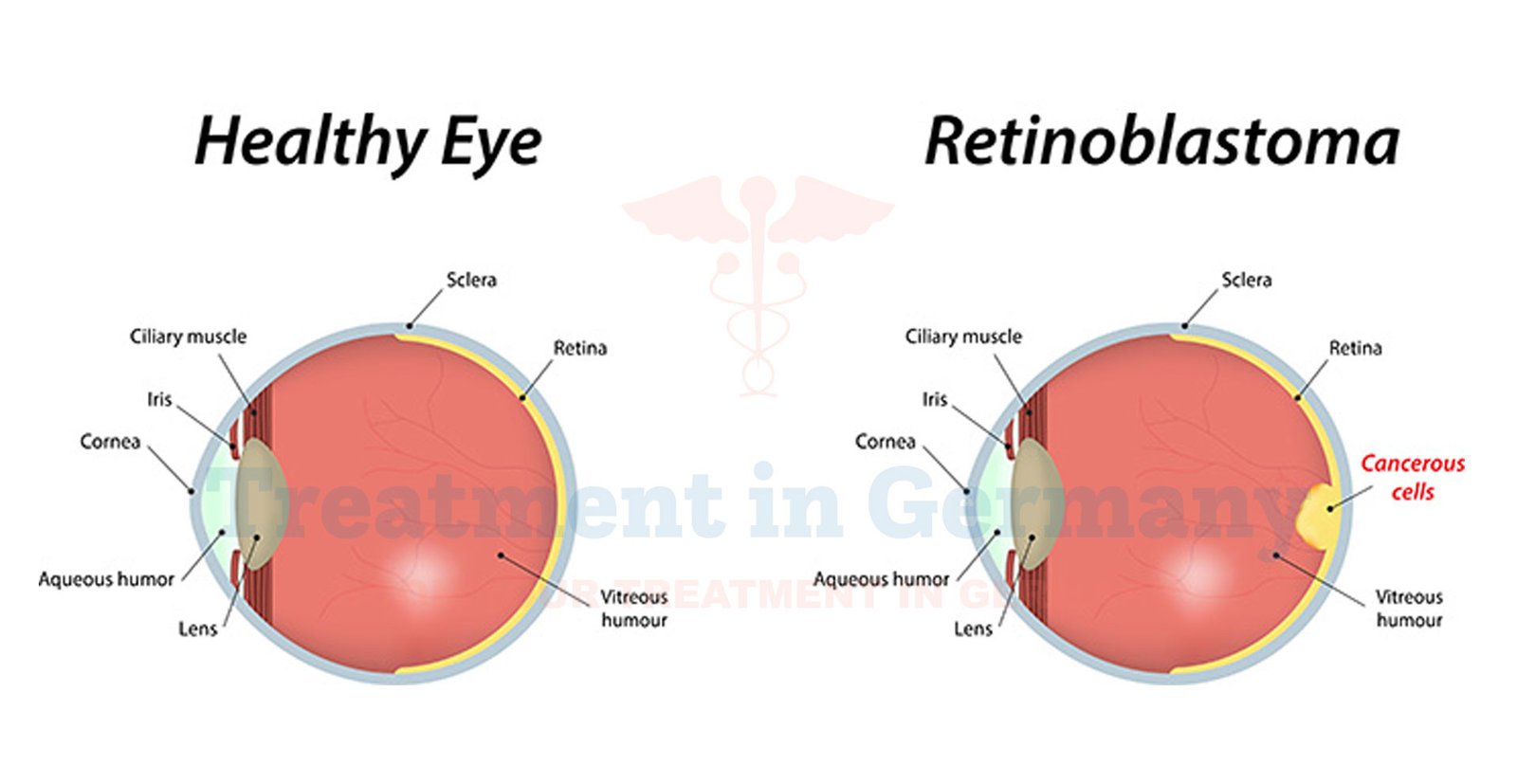What is (Retinoblastoma)?
Eye cancer, medically known as retinoblastoma, is a rare type of cancer that develops in the retina, the light-sensitive tissue at the back of the eye.
This cancer primarily affects young children, typically under the age of 5, although it can rarely occur in older children and adults. Retinoblastoma often manifests as a white pupil or a squint in the affected eye, which may be noticed by parents or caregivers.
Side effects of (Retinoblastoma):
The side effects of retinoblastoma can vary depending on the size and location of the tumor within the eye. Common symptoms include:
- White pupil (known as leukocoria), often seen in flash photographs
- Crossed eyes or squinting
- Poor vision or loss of vision in the affected eye
- Eye redness or irritation
- Enlargement of the eye (due to the tumor)
How is (Retinoblastoma) diagnosed?
Diagnosing retinoblastoma typically involves a comprehensive eye examination performed by an ophthalmologist, specializing in pediatric eye conditions. The examination may include:
- Visual assessment using specialized tools to evaluate the appearance and function of the eye.
- Dilated eye exam to examine the inside of the eye, including the retina.
- Imaging tests such as ultrasound, MRI, or CT scan to visualize the tumor and determine its size and location.
- Genetic testing may be recommended to assess the risk of hereditary retinoblastoma in the family.
Potential treatments of (Retinoblastoma):
The treatment approach for retinoblastoma depends on several factors, including the size and location of the tumor, whether the cancer has spread beyond the eye, and the child's overall health. Treatment options may include:
- Chemotherapy: Medications may be administered intravenously or directly into the eye to shrink the tumor before other treatments, such as surgery or radiation therapy.
- Surgery: Surgical options for retinoblastoma include techniques to remove the tumor while preserving vision whenever possible. In some cases, the entire eye may need to be removed (enucleation) to prevent the cancer from spreading.
- Radiation therapy: This treatment uses high-energy X-rays or other forms of radiation to destroy cancer cells. It can be delivered externally (external beam radiation therapy) or internally (brachytherapy) depending on the specific needs of the patient.
- Cryotherapy or laser therapy: These minimally invasive procedures use extreme cold (cryotherapy) or focused light (laser therapy) to destroy small retinoblastoma tumors.
- Targeted therapy: Emerging treatments such as targeted therapies or immunotherapy may be used in cases where retinoblastoma does not respond to traditional treatments or has spread beyond the eye.

.webp)
.webp)
 (1).webp)
 (1).webp)

.webp)
.webp)
 (1).webp)
 (1).webp)
